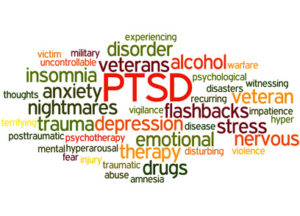 I have changed how I prepare PTSD disability claims involving combat veterans. Over the past few years I have represented dozens of “wounded warriors” – men and women who have served our country in Iraq, Afghanistan and elsewhere in the middle east. Perhaps you or a loved one find yourself applying for disability based on PTSD along with other degenerative physical issues such as chronic back or knee pain.
I have changed how I prepare PTSD disability claims involving combat veterans. Over the past few years I have represented dozens of “wounded warriors” – men and women who have served our country in Iraq, Afghanistan and elsewhere in the middle east. Perhaps you or a loved one find yourself applying for disability based on PTSD along with other degenerative physical issues such as chronic back or knee pain.
Many of the soldiers I represent served multiple tours of duty – often I represent retired military clients who served on active duty for 5, 8, 10 years or more.
In the past, an ex-military Social Security disability claimant who had served in combat duty, with a PTSD diagnosis from the VA and a 90% or 100% VA disability rating was almost certain to qualify for SSDI. For a variety of reasons, disability claimants meeting this profile are being questioned more by SSD judges and are getting turned down more often than before.
I think I understand why combat veteran PTSD claims are being denied and I have changed how I prepare my clients for their hearings.
First, judges are seeing more of these claims, so the stories they hear are less “shocking.” I’m not exactly sure how eyewitness reports of seeing your best friend’s body could become anything less than horrifying, but that is what is happening.
I also sense that SSD judges believe that the VA hands out 100% service connected disability awards based on PTSD to pretty much any combat veteran. I don’t necessary think this is true but I have seen a significant increase in 90-100% VA disability ratings. VA disability ratings are not binding on Social Security.
Second, and perhaps more important, I think that many of the combat veterans I represent don’t do a very good job in expressing exactly how otherworldly their wartime experiences were. This is where I have changed how I prepare my clients.
Consider a common scenario that I hear, perhaps one that you have experienced – my client was in a patrol searching for insurgents in an urban combat area. Perhaps he was in a security patrol guarding an officer, or perhaps he was patrolling in areas where the enemy had placed IEDs.
Now imagin e being tasked with those duties for weeks or months on end. You would be on high alert 24/7, never able to relax or feel comfortable that you are safe.
e being tasked with those duties for weeks or months on end. You would be on high alert 24/7, never able to relax or feel comfortable that you are safe.
Several years later – often after unsuccessful work efforts and failed personal relationships – my client finds himself applying for Social Security disability because of PTSD symptoms along with longstanding chronic physical pain.
The VA may have assigned a 100% disabled rating but the VA hospital treatment records I see reflect mostly medication therapy designed to dull the senses, and perhaps group therapy.
Often, my clients have a very difficult time expressing what they are experiencing. It is not enough to say “combat patrols were difficult and I sometimes saw people getting killed” or “I went on 7 to 10 patrols a week in a fortified urban combat zone.”
Instead, I advise my clients to go into detail about as many of the traumatic events that they can remember. This may mean describing the blood, muscle and skin tissue, brain matter and other up close experience of death. I would also refer you to a previous post on this blog about how to testify credibly about physical, emotional or sexual abuse in a disability hearing – the principles are the same.
I also walk my clients through a checklist of symptoms that would likely make even simple work difficult:
- flashbacks of traumatic combat experiences
- episodes of hypervigilance
- periods of deep depression
- periods of extreme anxiety
- failed relationships with significant others and strained relationships with children and relatives
- difficulty taking direction from supervisors
- difficulty interacting appropriately with co-workers and the general public
- discomfort with large crowds
- difficulty creating new relationships (often my PTSD clients wear dark glasses all the time to avoid eye contact with others)
- inappropriate startle responses to loud noises, bright lights and other stimuli
- seasonal mood disorder
- difficulty recovering from physical injuries (mind/body connection)
I stress the importance of painting a detailed picture for the judge about what my clients have gone through so that the judge understands that the resulting PTSD symptoms are consistent with the trauma.
I am finding that in cases where my clients practice going into uncomfortable detail about their truly traumatic combat experiences, and they replicate this practice at their hearings, judges are much more likely to award Social Security disability benefits.
- Please also visit this web page I have written about winning PTSD strategies.